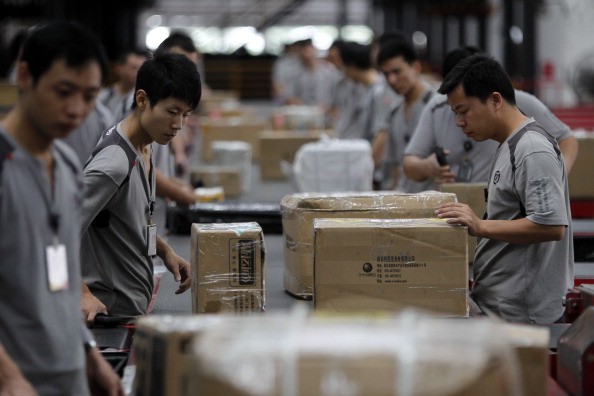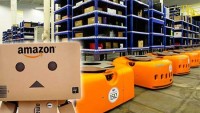40% of All Goods Sold Online in China in 2014 Were Fake: Report
| Kwao Peppeh | | Nov 03, 2015 10:05 AM EST |
(Photo : Photo by ChinaFotoPress/ChinaFotoPress via Getty Images) Workers distribute good purchased online at S.F. Express on November 11, 2013 in Shenzhen, China. A report has revealed that up to 40 percent of the items purchased online in China last year were fake.
China's online market has been rigged with counterfeit and tawdry goods. According to a new report, only 58.7 percent of all items sold via e-commerce in the country last year was genuine - the other 40 percent were fake.
The report by the law enforcement and inspection team of the National People's Congress Standing Committee was presented to high-ranking lawmakers on Monday.
Like Us on Facebook
The report revealed that as China experiences staggering e-commerce growth, the number of counterfeit items sold is also increasing. The country received 77,800 complaints about purchased counterfeit goods last year.
In the past five years, e-commerce has contributed as much as about 7 percent of China's gross domestic product (GDP). China has surpassed the United States as the largest online retailer in the world. Last year, Beijing earned about $442 billion online, while the U.S. earned nearly $300 billion.
Despite the growth and economic gains, China online market is plagued with fake products. The issue, which officials have sought to address, has been a long-suffering problem for international brands looking to veer into the Chinese market.
Alibaba Group Holding Ltd (BABA.N), China's most successful e-commerce company, has been heavily criticized for selling fake products. Earlier in the year, Jack Ma, Alibaba founder and Executive Chairman, said the company was itself a victim of counterfeit products.
Last month, the American Apparel and Footwear Association (AAFA) pressed the U.S. Trade Representative to include Alibaba in Washington's list of "notorious markets". Alibaba has been lobbying not be blacklisted. The Hangzhou-based company is working with renowned brands to get rid of counterfeit products from its online market.
Beijing's decision to publicize the report, which highlights a problem that has tainted the credibility of Chinese companies, has been widely welcomed.
The report advocates for the protection of the rights of consumers by urging officials to create an e-commerce legislation. It also calls for officials to improve e-commerce supervision and elucidate the government's position on the rights of consumers' and the responsibilities of sellers'.
TagsChina Ecommerce, China 2014 Online Product Sales 40 Percent Fake, China Online Sale of Fake Products
©2015 Chinatopix All rights reserved. Do not reproduce without permission
EDITOR'S PICKS
-

Did the Trump administration just announce plans for a trade war with ‘hostile’ China and Russia?
-

US Senate passes Taiwan travel bill slammed by China
-

As Yan Sihong’s family grieves, here are other Chinese students who went missing abroad. Some have never been found
-

Beijing blasts Western critics who ‘smear China’ with the term sharp power
-

China Envoy Seeks to Defuse Tensions With U.S. as a Trade War Brews
-

Singapore's Deputy PM Provides Bitcoin Vote of Confidence Amid China's Blanket Bans
-

China warns investors over risks in overseas virtual currency trading
-

Chinese government most trustworthy: survey
-

Kashima Antlers On Course For Back-To-Back Titles
MOST POPULAR
LATEST NEWS
Zhou Yongkang: China's Former Security Chief Sentenced to Life in Prison

China's former Chief of the Ministry of Public Security, Zhou Yongkang, has been given a life sentence after he was found guilty of abusing his office, bribery and deliberately ... Full Article
TRENDING STORY

China Pork Prices Expected to Stabilize As The Supplies Recover

Elephone P9000 Smartphone is now on Sale on Amazon India

There's a Big Chance Cliffhangers Won't Still Be Resolved When Grey's Anatomy Season 13 Returns

Supreme Court Ruled on Samsung vs Apple Dispute for Patent Infringement

Microsoft Surface Pro 5 Rumors and Release Date: What is the Latest?














